INTERNACIONAL
Bondi DOJ files complaint alleging misconduct by Federal Judge James Boasberg
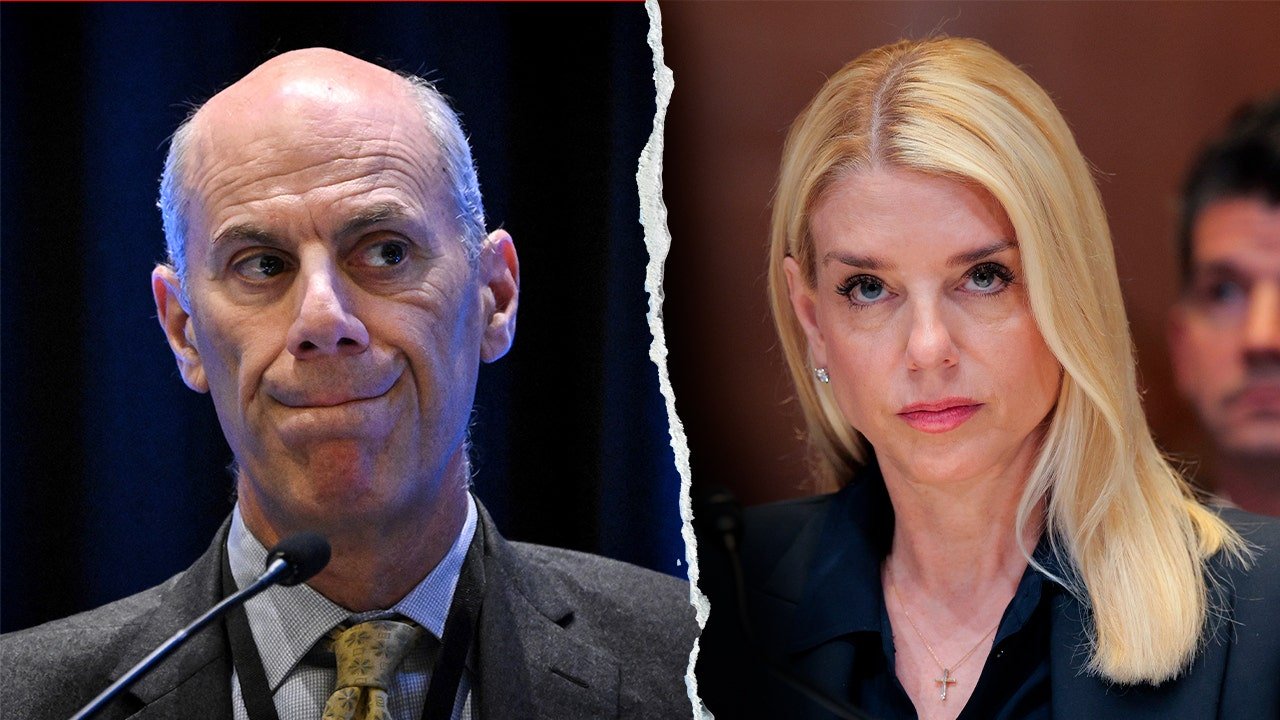
NEWYou can now listen to Fox News articles!
The Department of Justice has filed an official complaint alleging misconduct by US District Court Chief Judge James Boasberg. Fox News has reviewed the complaint which was written by Attorney General Pam Bondi’s Chief of Staff Chad Mizelle and addressed to the Chief Judge of the United States Court of Appeals for the District of Columbia Circuit, Sri Srinivasan.
Fox News has learned that the complaint was written and filed at the direction of Attorney General Pam Bondi.
WHO IS JAMES BOASBERG, THE US JUDGE AT THE CENTER OF TRUMP’S DEPORTATION EFFORTS?
«The Department of Justice respectfully submits this complaint alleging misconduct by U.S. District Court Chief Judge James E. Boasberg for making improper public comments about President Donald J. Trump to the Chief Justice of the United States and other federal judges that have undermined the integrity and impartiality of the judiciary,» says Mr. Mizelle.
Judge Boasberg is presiding over a high-profile case involving the deportation of several migrants to El Salvador and has talked about holding DOJ lawyers in contempt because of his assertion that his order to turn airborne planes around was not followed. President Trump has also made critical comments about Judge Boasberg.
The Justice Department, headed by Attorney General Pam Bondi, has filed an official complaint regarding US District Court Chief Judge James Boasberg. (Getty Images)
The complaint details two occasions on which Judge Boasberg made comments the Justice Department alleges undermine the integrity and impartiality of the judiciary.
«On March 11, 2025, Judge Boasberg attended a session of the Judicial Conference of the United States, which exists to discuss administrative matters like budgets, security, and facilities. While there, Judge Boasberg attempted to improperly influence Chief Justice Roberts and roughly two dozen other federal judges by straying from the traditional topics to express his belief that the Trump Administration would «disregard rulings of federal courts» and trigger «a constitutional crisis.» Although his comments would be inappropriate even if they had some basis, they were even worse because Judge Boasberg had no basis—the Trump Administration has always complied with all court orders. Nor did Judge Boasberg identify any purported violations of court orders to justify his unprecedented predictions.»
TRUMP FOE BOASBERG ORDERS DOJ TO DETAIL STATUS OF CECOT MIGRANTS SENT TO VENEZUELA
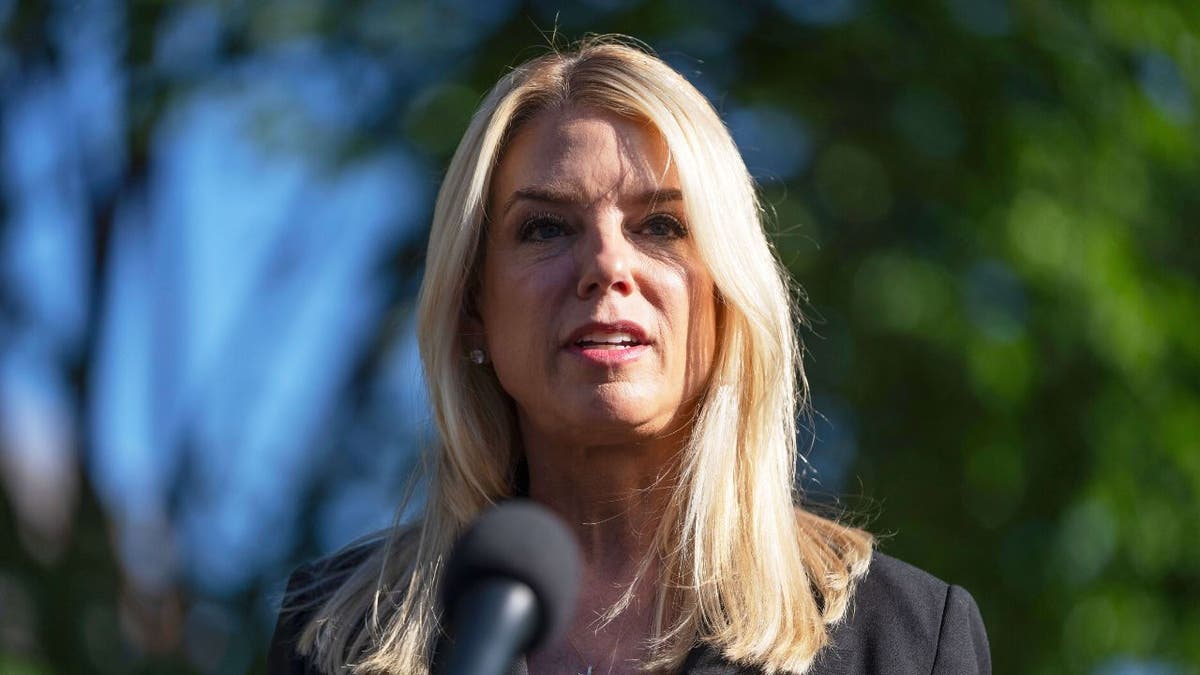
This is the second time the Bondi DOJ has filed a complaint against a federal judge. (AP Photo/Mark Schiefelbein)
«Within days of those statements, Judge Boasberg began acting on his preconceived belief that the Trump Administration would not follow court orders. First, although he lacked authority to do so, he issued a temporary restraining order preventing the Government from removing violent Tren de Aragua terrorists, which the Supreme Court summarily vacated.
«Taken together, Judge Boasberg’s words and deeds violate Canons of the Code of Conduct for United States Judges, and, erode public confidence in judicial neutrality, and warrant a formal investigation.»
JUDGE BOASBERG ORDERS RUBIO TO REFER TRUMP OFFICIALS’ SIGNAL MESSAGES TO DOJ TO ENSURE PRESERVATION
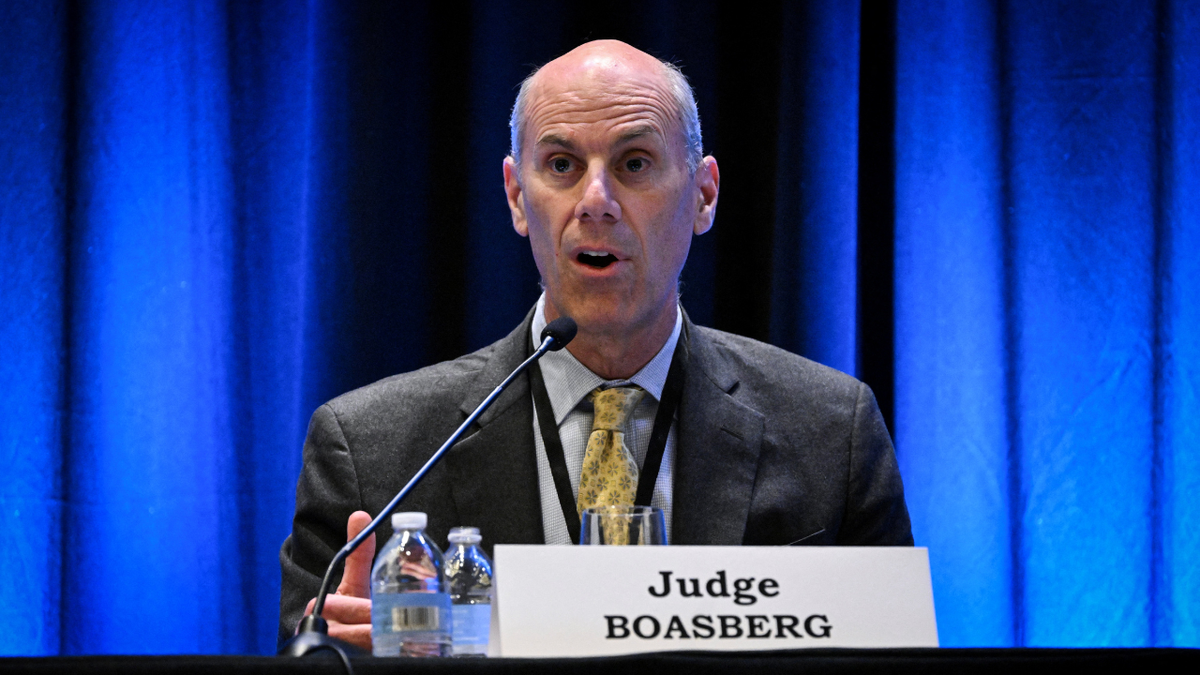
The complaint details two occasions during which Boasberg allegedly made comments undermining the judiciary’s integrity and impartiality. (DREW ANGERER/AFP via Getty Images)
The DOJ is asking Chief Judge Srinivasan to refer the complaint to a special investigative committee as an inquiry is essential to determine whether Judge Boasberg’s conduct constitutes «conduct prejudicial to the effective and expeditious administration of the business of the courts.» The complaint also asks that Judge Boasberg be taken off the case involving Venezuelan migrants who were deported to El Salvador, «to prevent further erosion of public confidence while the investigation proceeds.»
The case in question is J.G.G. v Trump.
This is the second time the Bondi DOJ has filed an official complaint against a federal judge. In late February, the DOJ filed a complaint about US District Judge Ana Reyes, concerning what the DOJ calls Judge Reyes’ «misconduct» during the proceedings in Nicolas Talbott et al. v. Donald J. Trump et al., which is a case brought by two LGBTQ groups challenging the Trump Administration’s Executive Orders barring transgender individuals from serving in the US military.
News of the complaint comes at a time when the Trump administration has excoriated dozens of so-called «activist» judges who have blocked or paused some of Trump’s sweeping executive orders from taking force in his second White House term.
Judge Boasberg in particular found himself at the center of Trump’s ire and attacks on so-called «activist» judges this year, following his March 15 temporary restraining order that sought to block Trump’s use of the Alien Enemies Act to quickly deport hundreds of Venezuelan nationals to El Salvador.
Boasberg had ordered all planes bound for El Salvador to be «immediately» returned to U.S. soil, which did not happen.
WHO IS JAMES BOASBERG, THE US JUDGE AT THE CENTER OF TRUMP’S DEPORTATION EFFORTS?
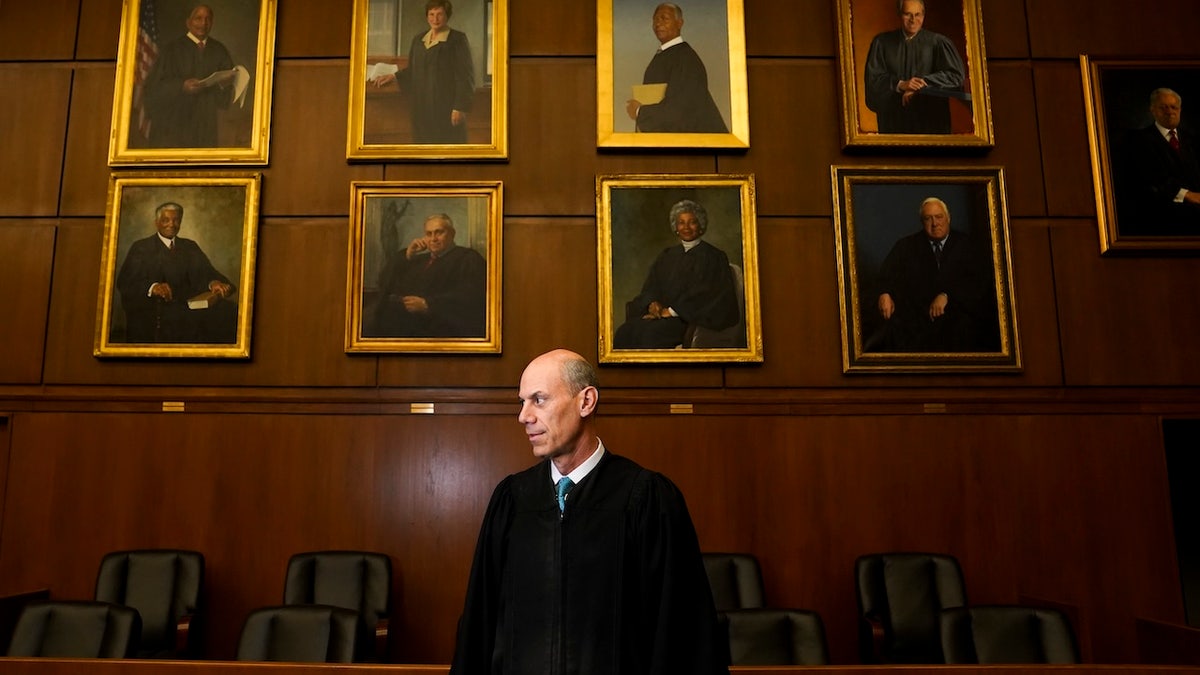
WASHINGTON, DC- Judge James E. Boasberg, chief judge of the Federal District Court in DC, stands for a portrait at E. Barrett Prettyman Federal Courthouse in Washington, DC on March 16, 2023. (Photo by Carolyn Van Houten/The Washington Post via Getty Images) (Washington Post via Getty)
His emergency order touched off a complex legal saga that ultimately spawned dozens of federal court challenges across the country – though the one brought before his court on March 15 was the very first – and later prompted the Supreme Court to rule, on two separate occasions, that the hurried removals had violated migrants’ due process protections under the U.S. Constitution.
Boasberg, as a result, emerged as the man at the center of the legal fallout.
Trump administration officials have repeatedly excoriated Boasberg both for his order and his attempt to determine whether they acted in good faith to comply with his orders, and Trump himself has floated the idea that Boasberg could be impeached earlier this year – prompting Supreme Court Chief Justice John Roberts to issue a rare public warning.
The complaint, focused on months-old behavior and allegations surrounding Judge Boasberg— first tapped as a judge by then-President George W. Bush in 2002, comes at a time when he could again have a say in a major class action case brought by lawyers representing the former CECOT migrants.
Lawyers for the ACLU and others in the class asked Judge Boasberg earlier this month to reopen discovery in the case, citing allegations from a United Nations report regarding custodial status of migrants at CECOT, and the recent decision to remove the 252 migrants sent from the U.S. to El Salvador to Venezuela under the prisoner exchange.
Asked at a status hearing in court last week whether the Justice Department would comply with the court’s orders, DOJ lawyer Tiberius Davis said they would, «if it was a lawful order.»
They also said they would likely seek an appeal from a higher court.
In April, Judge Boasberg also ruled that the court had found «probable cause» to hold the Trump administration in contempt for failing to return the planes to U.S. soil, in accordance with his March 15 emergency order, and said the court had determined that the Trump administration demonstrated a «willful disregard» for his order.
CLICK HERE TO GET THE FOX NEWS APP
The U.S. Court of Appeals for the D.C. Circuit stayed his original motion in April, and has yet to move on the matter.
INTERNACIONAL
EEUU corregirá los aranceles aplicados a Japón tras detectar un error respecto al acuerdo firmado en julio

Japón informó este viernes que Estados Unidos aplicó de forma incorrecta los nuevos aranceles a productos japoneses, violando los términos de un acuerdo bilateral alcanzado en julio. Washington admitió el error y se comprometió a corregir la orden ejecutiva correspondiente, además de reembolsar los pagos excedentes ya cobrados, según confirmó el negociador japonés en materia arancelaria, Ryosei Akazawa.
“El Gobierno de Estados Unidos ha reconocido que se cometió un error al establecer un arancel adicional del 15 % sobre gravámenes ya existentes, en lugar de aplicar un arancel fijo del 15 %, como estaba estipulado”, declaró Akazawa a la prensa japonesa en Washington. La información fue confirmada también por la cadena pública NHK, que cubre la visita de la delegación japonesa a EEUU.
El anuncio se produjo tras una reunión de más de tres horas entre Akazawa y los secretarios estadounidenses de Comercio, Howard Lutnick, y del Tesoro, Scott Bessent. Según un comunicado emitido por la Cancillería japonesa, el negociador “confirmó una vez más el contenido del acuerdo sobre aranceles recíprocos e instó a Estados Unidos a corregir la orden ejecutiva lo antes posible”.
La disputa surge luego de que Estados Unidos activara la nueva política arancelaria del presidente Donald Trump en la medianoche del jueves. La orden impuso un gravamen adicional del 15 % a productos importados desde Japón, lo que en algunos casos elevó los aranceles totales por encima de lo negociado. Tokio sostiene que esta aplicación no refleja el acuerdo alcanzado el pasado 22 de julio, cuando ambas partes pactaron un arancel fijo del 15 %, más bajo que el 25 % previamente amenazado y del 24 % anunciado en abril.
“Es sumamente lamentable que se haya emitido y puesto en vigor una orden presidencial que no cumple con el acuerdo entre Japón y EEUU”, expresó Akazawa. El funcionario también señaló que no se ha fijado una fecha concreta para la corrección, ya que se trata de un procedimiento administrativo interno de Estados Unidos. No obstante, indicó que la modificación “tendrá efecto retroactivo” y cubrirá las tasas cobradas hasta que se aplique la enmienda.
El acuerdo bilateral incluía, además del arancel del 15 % sobre importaciones generales desde Japón, una cláusula clave sobre la industria automotriz. La Administración Trump se comprometió a reducir los aranceles automotrices del 27,5 % al 15 % para vehículos y autopartes japonesas.

Esta rebaja fue negociada a cambio de una promesa de inversión por parte del gobierno japonés en territorio estadounidense. Sin embargo, Tokio aún espera claridad sobre cuándo se aplicará esta reducción.
El gobierno japonés ha mantenido que confía en que Washington cumplirá los términos acordados. En sus declaraciones, Akazawa reiteró que Japón actuará con base en el entendimiento alcanzado y continuará monitoreando los desarrollos administrativos en EEUU.
Este incidente ocurre en un contexto en el que Estados Unidos ha implementado aranceles diferenciados por país como parte de su política comercial bajo el lema “América primero”.
Japón, que buscaba un trato preferencial, consideró que había asegurado un alivio arancelario mediante negociaciones directas. La aplicación incorrecta del gravamen generó preocupación inmediata en Tokio sobre la solidez de los compromisos estadounidenses.
En tanto, Washington aún no ha emitido una orden formal de rectificación. Se espera que el Departamento de Comercio publique una revisión oficial de la orden ejecutiva en los próximos días. Hasta entonces, las empresas japonesas afectadas aguardan una resolución que garantice el reembolso y la estabilidad en las reglas de comercio bilateral.
(Con información de EFE)
Asia / Pacific,Corporate Events,Diplomacy / Foreign Policy,OSAKA
INTERNACIONAL
Estas son las cinco condiciones aprobadas por Israel para poner fin a la guerra en Gaza

Israel dio un nuevo paso en su estrategia militar y política en la Franja de Gaza al definir los términos que, según su gobierno, permitirían poner fin al actual conflicto con el grupo terrorista Hamas. En una sesión clave celebrada este viernes, el Gabinete de Seguridad aprobó una serie de principios que establecen las condiciones mínimas para un eventual alto el fuego, así como un nuevo plan de acción militar centrado en la ocupación de la Ciudad de Gaza, uno de los últimos bastiones del grupo islamista.
Las decisiones se producen en un momento en que el conflicto ha alcanzado un punto crítico tanto en el frente militar como en el terreno diplomático. Las autoridades israelíes sostienen que la derrota total de Hamas y la recuperación de los rehenes son objetivos innegociables. A la vez, se intensifican los debates internos sobre la viabilidad y el impacto humanitario de una ocupación más amplia del enclave palestino.
Los principios, informados por la Oficina del Primer Ministro, son:
- El desarme de Hamas.
- El regreso de todos los rehenes, vivos y muertos.
- La desmilitarización de Gaza.
- Control de seguridad israelí en Gaza.
- El establecimiento de una administración civil que no sea ni Hamas ni la Autoridad Palestina.
Según el comunicado oficial, “una mayoría decisiva de ministros del Gabinete de Seguridad creía que el plan alternativo que se había presentado al Gabinete de Seguridad no lograría la derrota de Hamas ni el regreso de los rehenes”.
Horas antes de la aprobación de la misión, el primer ministro Benjamin Netanyahu declaró que Israel no quiere gobernar Gaza. “Queremos entregársela a fuerzas árabes que la gobiernen adecuadamente sin amenazarnos y garantizando una vida digna para los gazatíes; eso no es posible con Hamas”, afirmó.
En la misma sesión, el gabinete también aprobó un plan militar presentado por Netanyahu para que las Fuerzas de Defensa de Israel (FDI) ocupen la Ciudad de Gaza, situada en el norte del enclave palestino. La decisión fue comunicada oficialmente por la Oficina del Primer Ministro y confirmada por medios locales.
Según el comunicado, las FDI se prepararán para avanzar sobre la ciudad y se comprometerán a garantizar la provisión de ayuda humanitaria a la población civil ubicada fuera de las zonas de combate. La oficina del primer ministro señaló que el gabinete respaldó la “propuesta de Netanyahu para derrotar a Hamas” y que Israel “proporcionará ayuda humanitaria a la población civil fuera de las zonas de combate”.
Indicó, además, que de los 50 rehenes que Israel contabiliza como aún cautivos de Hamas, se cree que 20 continúan con vida. El regreso de estas personas, junto con la eliminación de la capacidad militar del grupo, forman parte central de los principios aprobados.
Medios israelíes señalaron que el plan alternativo rechazado sería el impulsado por el jefe del Estado Mayor de las FDI, Eyal Zamir, quien expresó su oposición a la ocupación total de la franja, argumentando que podría derivar en un desastre humanitario y poner en riesgo la vida de los cautivos.
El comunicado del gobierno se refiere únicamente a la Ciudad de Gaza y no menciona la ocupación de toda la Franja, aunque el jueves Netanyahu había declarado que su objetivo era tomar el control total del enclave. La ciudad representa aproximadamente el 25% del territorio que las FDI todavía no controlan, junto con varios campos de refugiados en el centro de Gaza.
No está claro si las otras áreas no conquistadas serán incluidas en etapas posteriores del plan aprobado. El énfasis en la Ciudad de Gaza indica que la toma de control militar se iniciará de manera gradual.
La ciudad, donde viven cerca de 800.000 residentes, es uno de los últimos bastiones bajo control de Hamas y concentra una alta densidad de población civil. Su eventual ocupación reduciría aún más el territorio habitable para los 2 millones de habitantes de Gaza y anticipa complejidades operativas y humanitarias en las próximas semanas.
(Con información de EFE)
Middle East,Military Conflicts,ISRAEL-GAZA BORDER
INTERNACIONAL
President Trump increases federal law enforcement presence in DC following violent crime surge

NEWYou can now listen to Fox News articles!
President Donald Trump has directed federal law enforcement to increase its presence throughout Washington, D.C., following a concerning surge in violent crime, including an incident in which a former DOGE worker nicknamed «Big Balls» was brutally beaten in the streets this week.
Trump signed an executive order in March establishing the «Making DC Safe and Beautiful Task Force.» Now the administration is taking a whole-of-government approach by deploying additional law enforcement to increase presence and improve overall public safety in the nation’s capital city, according to a source familiar with the plans.
The operation, which will use both local and federal law enforcement agencies, including Homeland Security Investigations, the FBI, DEA and others, begins at midnight on Thursday and will initially last for seven days with the option to extend «as needed.»
Law enforcement will focus on improving safety in high-traffic tourist areas and other known hotspots.
TRUMP WHITE HOUSE CELEBRATES LATEST CHAPTER OF WINS AT 200-DAY MARK
Following a former DOGE worker nicknamed «Big Balls» being brutally beaten by gang members in the streets of Washington, D.C., President Donald Trump indicated he is strongly considering taking control of the district to stamp out the rampant crime and violence plaguing the nation’s capital city. (Chip Somodevilla/Getty Images and AP Photo/Manuel Balce Ceneta)
In a statement to Fox News, White House Press Secretary Karoline Leavitt announced «there will be no safe harbor for violent criminals in D.C.» beginning on Thursday night.
«Washington, DC is an amazing city, but it has been plagued by violent crime for far too long,» Leavitt said. «President Trump has directed an increased presence of federal law enforcement to protect innocent citizens. Starting tonight, there will be no safe harbor for violent criminals in D.C.»
She added, «President Trump is committed to making our Nation’s capital safer for its residents, lawmakers, and visitors from all around the world.»
The source familiar with the plans noted that stamping out the «out-of-control violent crime plaguing DC» has been an «ongoing priority» for the president and that the move is him delivering on his campaign promise to restore the capital city.
TRUMP THREATENS TO FEDERALIZE DC AFTER EX-DOGE EMPLOYEE ‘BIG BALLS’ VIOLENTLY BEATEN
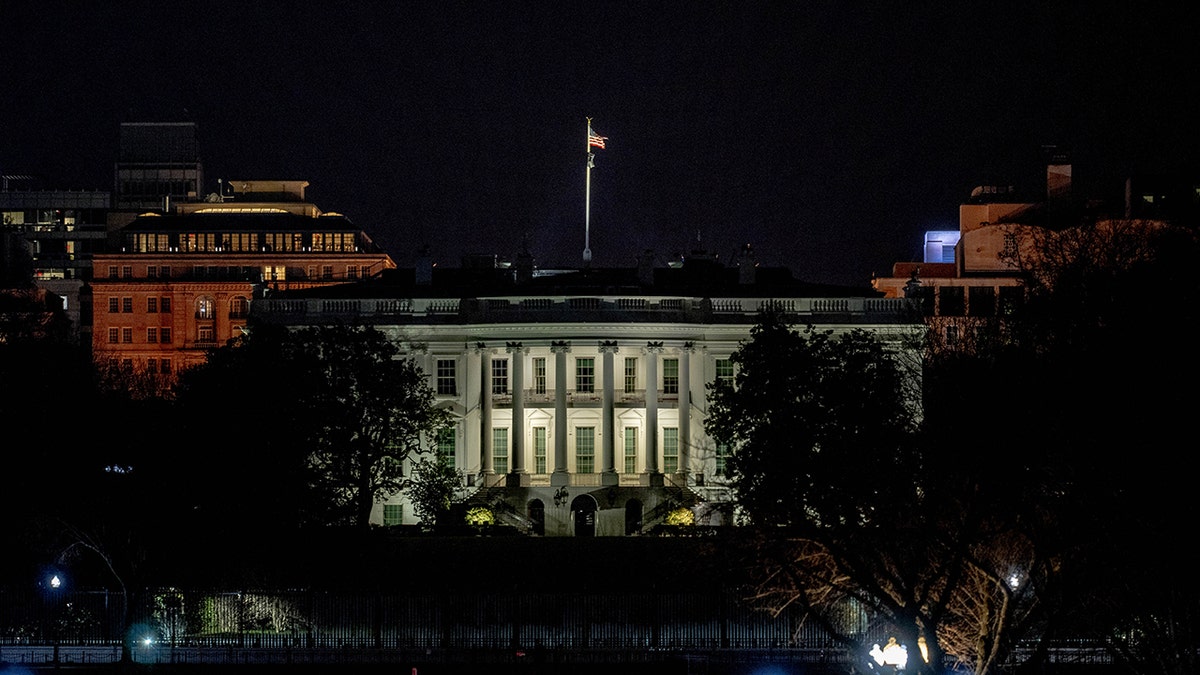
A view of the White House at night in Washington, D.C., on Feb. 23, 2022. (Roy Rochlin/Getty Images)
Among the priorities laid out in Trump’s executive order, he directed the task force to deploy a more robust federal law enforcement presence and coordinate with local law enforcement in the District of Columbia, including the National Mall and Memorial Parks, museums, monuments, Lafayette Park, Union Station, Rock Creek Park, Anacostia Park, the George Washington Memorial Parkway, the Suitland Parkway, and the Baltimore-Washington Parkway.
The order also instructs the task force to review and, if needed, revise federal prosecutorial policies on pretrial detention of criminal defendants to ensure individuals who pose a threat to public safety are detained to the maximum extent permitted by law.
Additionally, the order instructs the task force to direct maximum enforcement of federal immigration law, redirecting federal, state or local law enforcement resources to apprehend and deport illegals throughout the area.
WATCH: TRUMP HINTS HE WILL FEDERALIZE DC SOON, BRING IN NATIONAL GUARD AFTER ‘BIG BALLS’ ATTACK

President Donald Trump gestures to the crowd at the Conservative Political Action Conference, CPAC, at the Gaylord National Resort & Convention Center, Saturday, Feb. 22, 2025, in Oxon Hill, Md. (AP Photo/Jose Luis Magana)
The source said the additional law enforcement will be devoted to protecting D.C. residents and visitors from the «scourge of violent crime plaguing» the city.
CLICK HERE TO GET THE FOX NEWS APP
«President Trump promised to Make DC Safe Again on the campaign trail – this is another promise kept,» they said.
donald trump,executive policy,washington dc,crime world,police and law enforcement

 CHIMENTOS2 días ago
CHIMENTOS2 días agoMalas noticias para Wanda Nara: por qué la bajaron misteriosamente de MasterChef: «No va a salir este año»

 POLITICA2 días ago
POLITICA2 días agoAxel Kicillof reclamó ante la Corte Suprema $12 billones que le adeuda Nación

 POLITICA2 días ago
POLITICA2 días agoSebastián Pareja justificó el armado de listas de LLA en la Provincia: “El desafío era dar una opción diferencial”





















